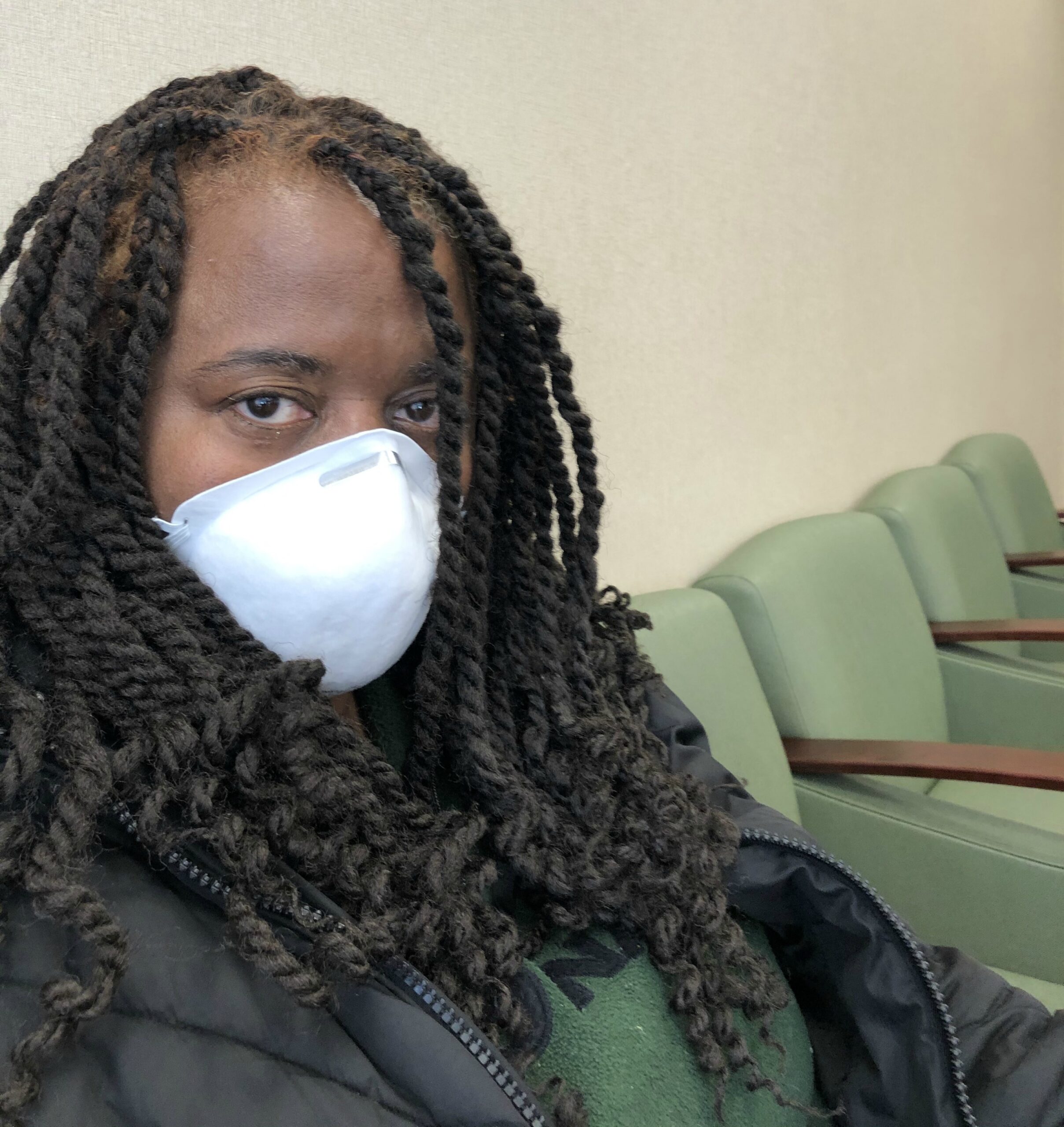This is me on March 9th in a Queens urgent care. This is before wearing a mask in public was really a thing. I really remember considering whether I wanted to wear a mask. I was sick and was coughing and had yet to be tested. I knew I needed to wear a mask. I was having a moment when I was thinking about what people might think. That moment is so over.
Back to March 8th. I had just traveled from a conference in Hartford, CT back to Long Island. Ten minutes after I entered my mother’s house, I started coughing. It was just a little cough, at first. I thought it was nothing. It wasn’t. By morning, I was coughing more consistently. I also had chills and body aches and a fever.
When I called my doctors office to be seen, I was put on a momentary hold. I was told the protocol had changed and I should not come into the office. Instead, I needed to go to one of two urgent cares that would test me for COVID-19. Both of these facilities are located in Queens. It was a little shocking to me, since my doctor and I were both in Nassau.

When I read that the Black community might not be getting access to coronavirus test, I was not surprised. Each time I told someone I was test, the immediate response was to ask how did I get a test. I think the fact that I was at a conference with 3,000 other people made my illness more concerning.
Clearly testing access wasn’t easy on March 9th. Remember, I had to leave my county to be tested. Testing everywhere was questionable. In the undeserved Black and Brown communities, there is no reason to think that there would have even a proportionate share of testing. Early data on testing didn’t disclose demographic information. It seems to me that the lack of testing can be seen as a proxy for the lack of quality health care in these communities. How could we expect to have testing in underserved areas when healthcare in these areas is subpar?
It is not simply access to quality healthcare and, better yet, culturally competent health care. The assumption that usually follows is that money will make this problem go away. Unfortunately, this is not the case. Perhaps, you recall the story of Serena Williams and her life-threating labor experience. Money wasn’t her issue. Her medical team wasn’t listening to her. Money made it possible for her to force their hand.
Advanced education doesn’t get rid of the healthcare disparities either. A black woman with a PhD is more likely do die from birth-related complications than a white woman with only high school diplomas.
 These disparities in treatment are not limited to any one area of healthcare. In 2019, the American Heart Association documented the fact that black women still experience significantly lower rates of treatment when compared to whites or Hispanics.
These disparities in treatment are not limited to any one area of healthcare. In 2019, the American Heart Association documented the fact that black women still experience significantly lower rates of treatment when compared to whites or Hispanics.
Given the data, it’s no surprise that Black people are disproportionately impacted by COVID. The history of Black people receiving inadequate health is long. Over generations the social determinants of health help to expose the differences that impact health. The social determinants of health are the economic and social conditions that influence individual and group differences in health status.
#covid19 is shining a light into the cracks of our society. Let’s talk about how we build resilient, healthy communities from here. We don’t have all the answers, but we’re certain we can get there together!
#populationhealth #sdoh #healthequity When you look at the way your hospital responds to diverse patient populations, are you satisfied that your health equity playbook is fully supported?
This has been the case long before wearing face masks in public were a thing.



